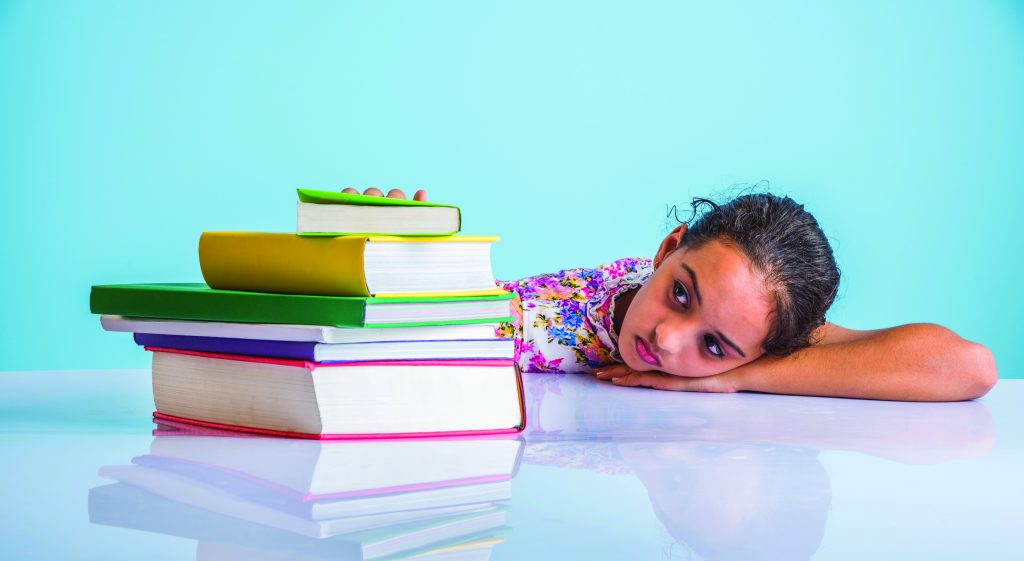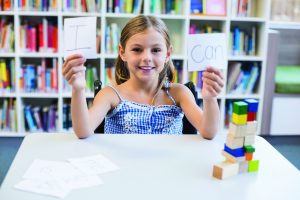Learning More about Learning Disabilities

October is National Learning Disability Awareness Month. Learning to read and write poses challenges for all children. However, those with language-based learning disabilities (LD)—such as dyslexia (reading); dysgraphia (writing); and dyscalculia (math); often combined with ADHD and executive function difficulties (problems with organization) or other auditory or visual-processing challenges— face additional difficulties. It appears one in every five children has some sort of learning disability. The brains of children with learning disabilities simply process material differently, scrambling bits of incoming information and disrupting what goes out. This results in neurologically based communication problems.
Many children with learning disabilities tend to process information visually. Engaging them to visualize each step of a story or assignment can help. Diagramming a word and its different meanings is also useful to them when trying to understand words with multiple meanings. Through the use of technology, individualized instruction, the arts, sports, and more, schools can help children with learning disabilities thrive.

Claudia Koochek, head of Westmark School, understands the myriad of challenges these students face. “Once a child falls behind in school due to an undetected or undiagnosed learning disability,” says Ms. Koochek, “and/or insufficient resources to assist them, often that child faces not only academic challenges but social and emotional ones as well. Early identification is crucial to a child’s success. If you feel that there is a discrepancy between your child’s ability and performance, get your child tested.”
Ms. Koochek cites certain critical steps parents can take to ensure their child receives the best education possible that best addresses the learning disability. First, she stresses, “Educate yourself about your child’s disability and make sure he or she is in the most inclusive environment, with educators who not only understand LD but are also trained in research-based methodologies that help students access learning.” She emphasizes that parents should become their own experts. “Take time to learn more about your child’s particular LD diagnosis,” she continues. “Become involved in your child’s life and become his or her best advocate. And finally, focus on your child’s strengths, not only on their challenges. Continue to cultivate their favorite pastimes, passions, and affinities.”
It isn’t always easy to diagnose a child with learning disabilities. Some signs to look for include difficulty in focusing. Note that difficulty in focusing might not be ADHD. It could also be from dyslexia or other LDs that make it impossible for the child to process the information. Another sign to look for is the inability to spell correctly or recall the names of letters and sounds, which may be dyslexia. Even poor coordination in young children can indicate a learning disability. For instance, at 5-years-old, a child should be able to button his or her clothing and cut shapes out of paper with scissors. Not understanding how to begin a task or continue it successfully can also be a sign. It’s important to let a professional observe your child for the most accurate diagnosis.

Once a child is diagnosed with a specific learning disability, a school will provide an Individualized Education Program (IEP), stating the student’s learning goals and services the school will provide. The more you can involve children in their own assessment and objectives, the better the long-term success. After all, it’s their education that’s being decided. There are great resource for parents, adults, and educators looking to learn more about advocacy and various learning disorders, such as the LDA, Learning Disabilities Association of America (ldaamerica.org), and Understood.org.
Both children and parents need to understand that different is just that: neither better nor worse. Although there is no cure for learning disabilities, with proper diagnosis, caring parents, and the appropriate educational environment, children can grow to lead thoroughly fulfilling and successful lives.
By Lori Berezin



